2025 Reading List
January 01 2025This is the reading list for 2025.
- The Handmaid's Tale by Margaret Atwood
- Happy City by Charles Montgomery
- Welcome to Pawnee by Jim O'Heir
- Abundance by Ezra Klein and Derek Thompson
- Men Who Hate Women by Laura Bates
- Stupid TV, Be More Funny: How the Golden Era of The Simpsons Changed Television - and America - Forever by Alan Siegel
- The Anxious Generation by Jonathan Haidt
- Apple in China by Patrick McGee
The Handmaid's Tale by Margaret Atwood
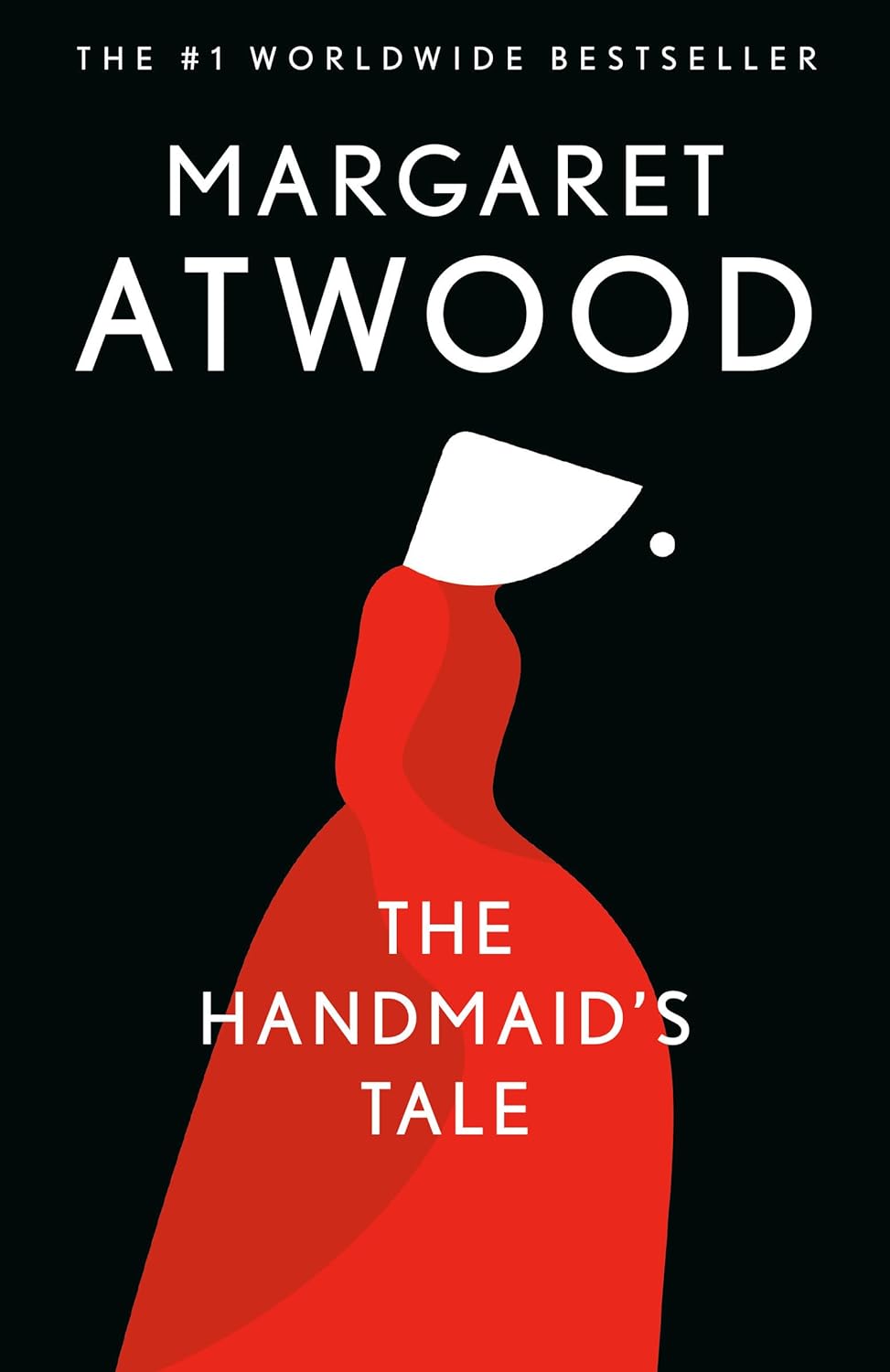
Perhaps with Trump coming in, I was in the mood for a post-Totalitarian story. It’s pretty amazing that this book was written in the 80’s, and how prescient it is on many of the new-conservative topics now. This book is very well written, maximizes on mood and mystery, and is ultimately satisfying to read.
Happy City by Charles Montgomery
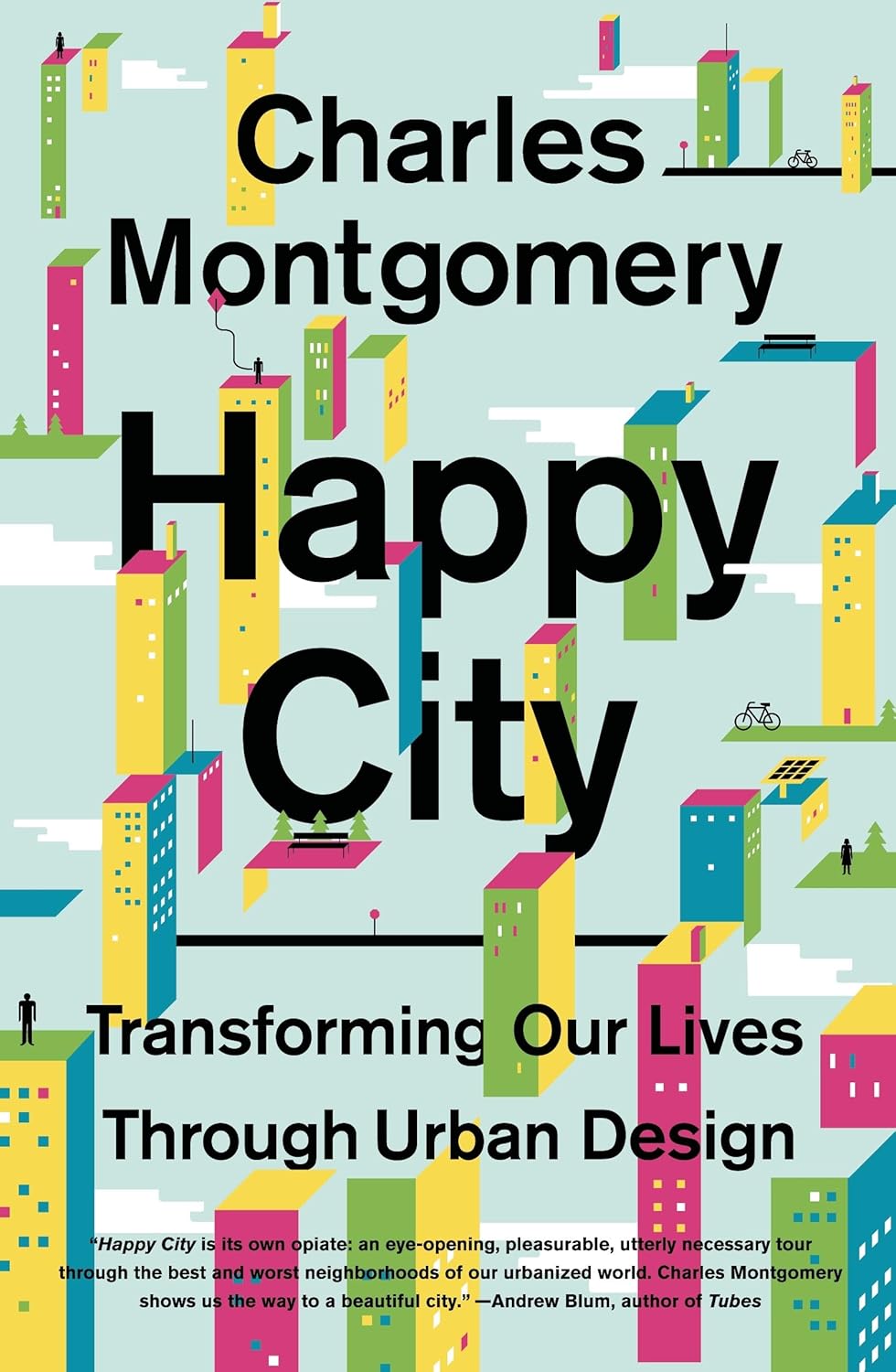
This is a nice, nerdy read about urban design, and specifically about moving away from car dependence. Montgomery gives a few examples of cities and communities that have successfully emphasized more bike paths and walking. While it was nice to learn, the book doesn’t actually take a stand on HOW cities can transform, or what citizens can do.
Welcome to Pawnee by Jim O'Heir
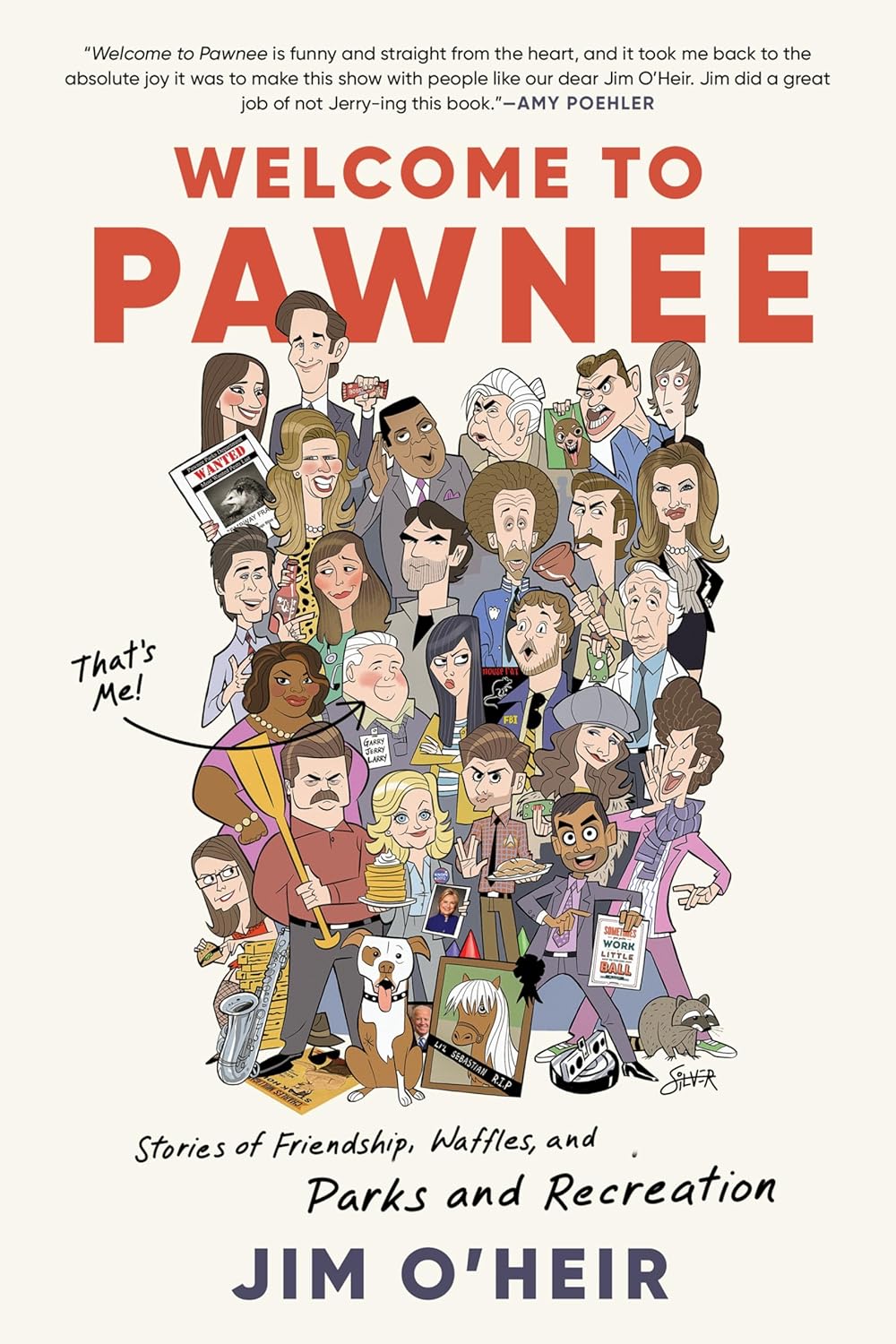
Parks and Recreation is quite possibly my favorite TV show ever, and it is also probably the one that I have rewatched the most times. Jim O’Heir plays Jerry (Garry, Berry, Larry, Terry) Gergich on the show, one of the side characters but nevertheless a member of the core cast. Since the show ended up more than 10 years ago, O’Heir has become somewhat of a mascot for the show. He hosts a rewatch podcast for the show. And he has recently written this book, which is a combination of his memoirs and his stories from the show.
The book is a short and breezy read. The role of Jerry Gergich is probably the one that Jim O’Heir is most known for. Throughout the book, O’Heir talks about his good fortune but especially about his imposter syndrome. As a working actor in Hollywood, he is always wary of either his part being written out or the show being cancelled. It really shows that even some people that we would find to be traditionally successful still have their own internal struggles.
O’Heir tells wonderful stories about his fellow cast mates, but really the book is one long love letter to the show. The show is relentlessly positive and uplifting, which is probably the main reason why I’ve rewatched it so many times.
There is a wonderful quote from the show runner Mike Schur that sums up the show well:
The message of the show that Amy and I used to talk about all the time was that optimism beats pessimism. As tempting as it is to give in to pessimism or denialism, and to throw up your hands and say "None of this matters; it’s all bullshit. The world is screwed up, we’re all going to die, and climate change is going to ruin the planet." Yes, that is an option and if you do that, congratulations. Now what? Or you can be Leslie Knope and you can say, “I’m going to keep fighting. I don’t know, maybe it won’t work, but I’m going to keep fighting. I’m going to keep trying.”
Abundance by Ezra Klein and Derek Thompson
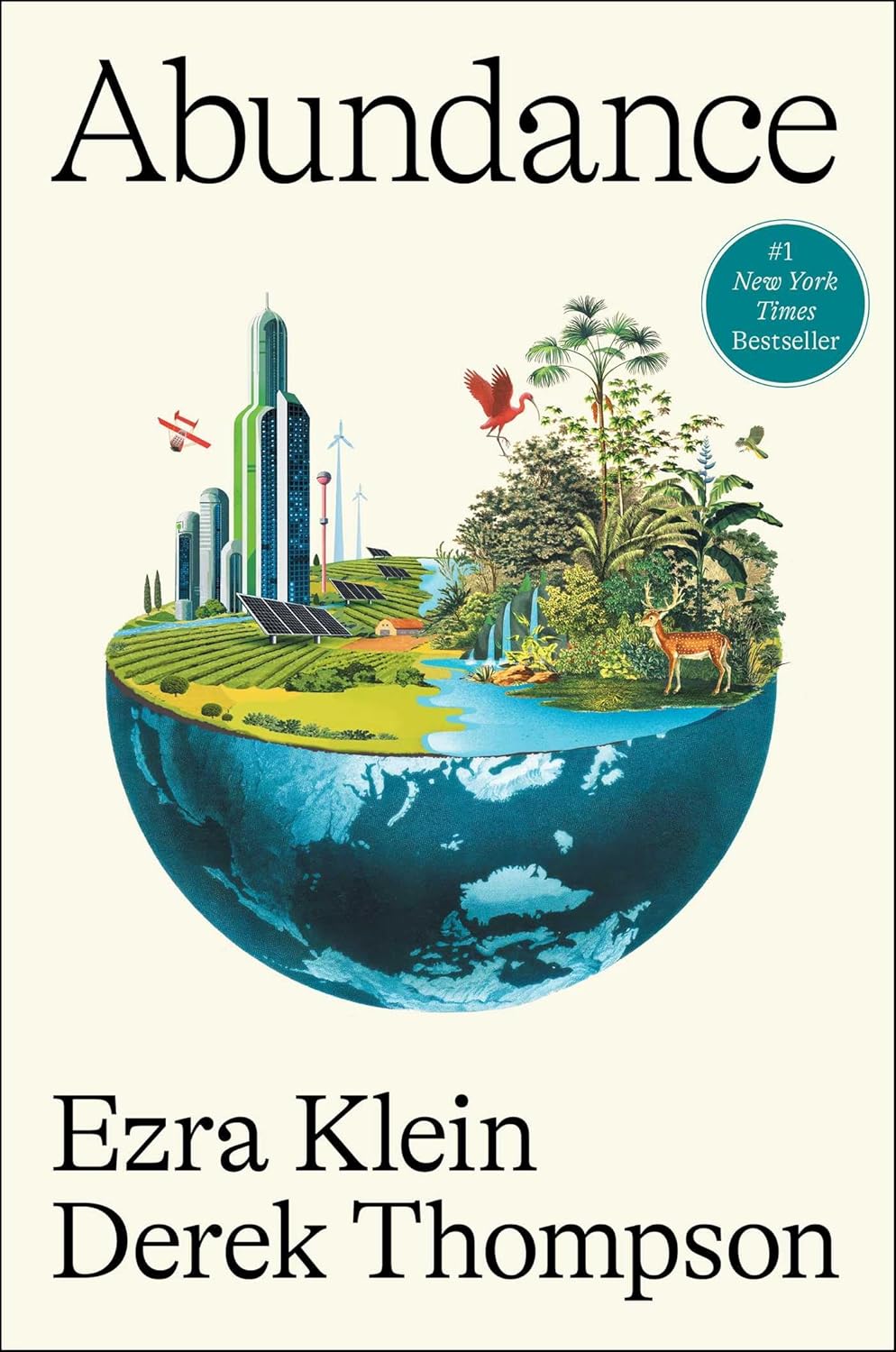
I had previously read Ezra Klein’s Why We’re Polarized and I sometimes listen to Derek Thompson’s Plain English podcast, so I was well aware that this book was coming and the marketing blitz behind it. This will probably be the most “popular” book that I read this year, in terms of just how many other people will read it this year. The central tenet of the book is the espousal of a Democratic politics platform of abundance, in terms of building more, encouring innovation and science, and cutting red tape. Unfortunately, much of what the Democratic party has been focused on over the past several decades is the addition of MORE red tape, which this book does a great job of documenting.
Ultimately, while the message behind the book is admirable, I’m not sure that it will lead to much if any real change in the leadership of the Democratic party. At least, as I write this, it’s unclear even who the leadership of the Democratic party is, since it’s clearly not Kamala Harris, and no one else has really taken up the mantle.
Men Who Hate Women by Laura Bates
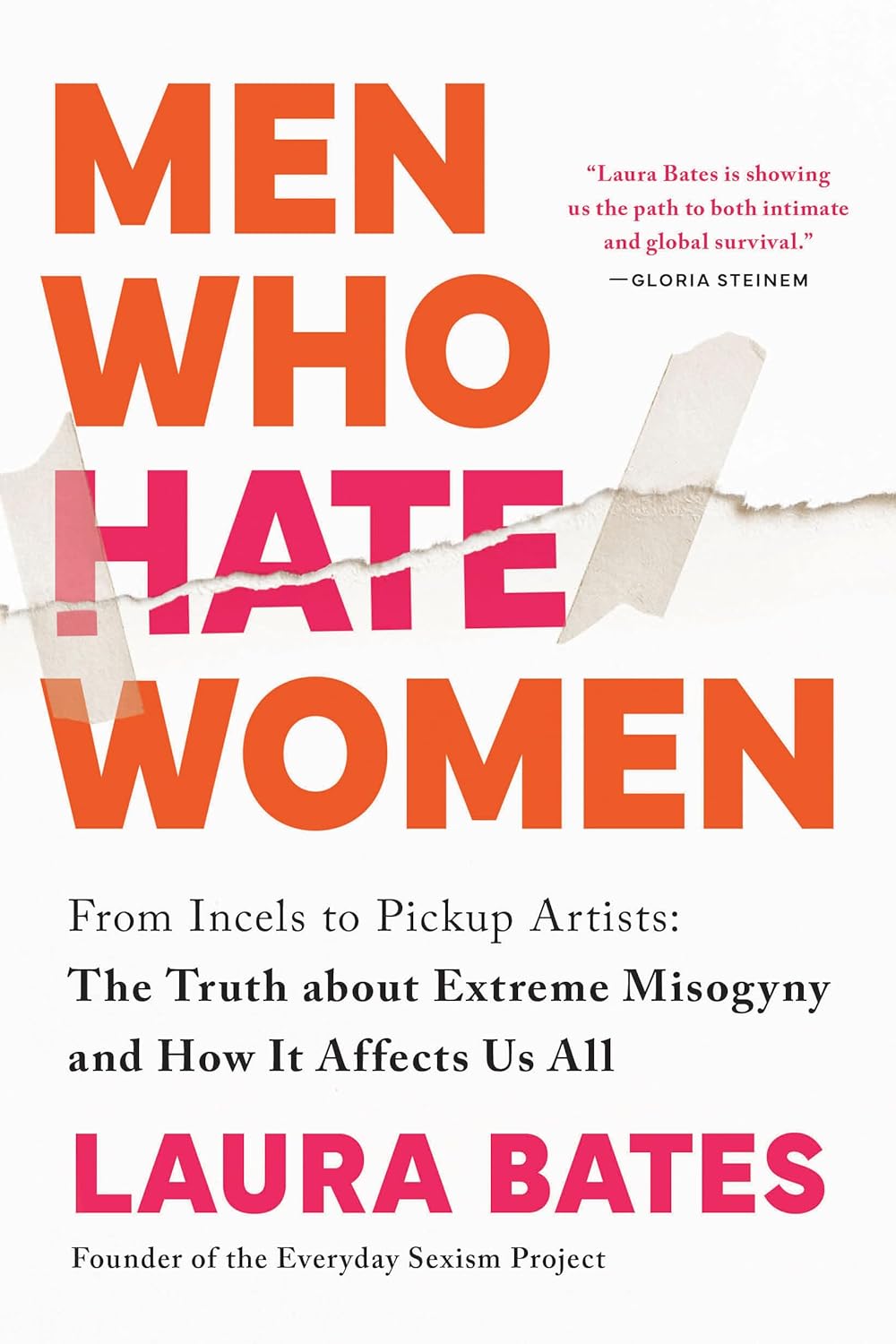
One of the best TV shows I’ve seen this year is Adolescensce, a Netflix miniseries about a young boy that murders a female classmate. It tangentially explores the incel community, and the young boy’s complicated feelings toward the opposite sex. I was definitely familiar with the concept of incels, but after watching the show, I wanted to learn more. This book by Laura Bates is a very exhaustive (and very depressing) deep dive into what she coins as the “manosphere”, which comprises of several overlapping communities, including incels, pickup artists, and men who intentially stay away from women. What they all have in common is the objectification of women (and particular of sex), and a healthy amount of hate for themselves and for women.
Bates does a great job of diving deep into all these communities and highlighting their dangers. The most eye opening is probably tying several recent mass shooters to these communities, which the media pretty much ignored alltogether (for example, the Christchurch shooter). While mass media are eager to highlight Islamic terrorism and even starting to highlight alt right and white supremacist terrorism, misogyny is almost never touched on. Part of the reason I guess is that there is a massive amount of overlap between these manosphere communities and the alt right. The vast majority of members are white men. So misogyny is just another ingredient into the general hate soup, which includes racism as well. I learned a lot reading this book, if only just to understand where this hatred starts from and the signs to look out for. I’m terrified that my daughters are entering ages soon where they might start dating boys, and I’m certain that many of these boys will have been exposed to this misogynistic rhetoric.
One small nit pick of this book is that it is very highly dense, with very long chapters, and there is only a loose structure within the chapters. Having some section headings would have been nice just to orient the reader.
Stupid TV, Be More Funny: How the Golden Era of The Simpsons Changed Television - and America - Forever by Alan Siegel
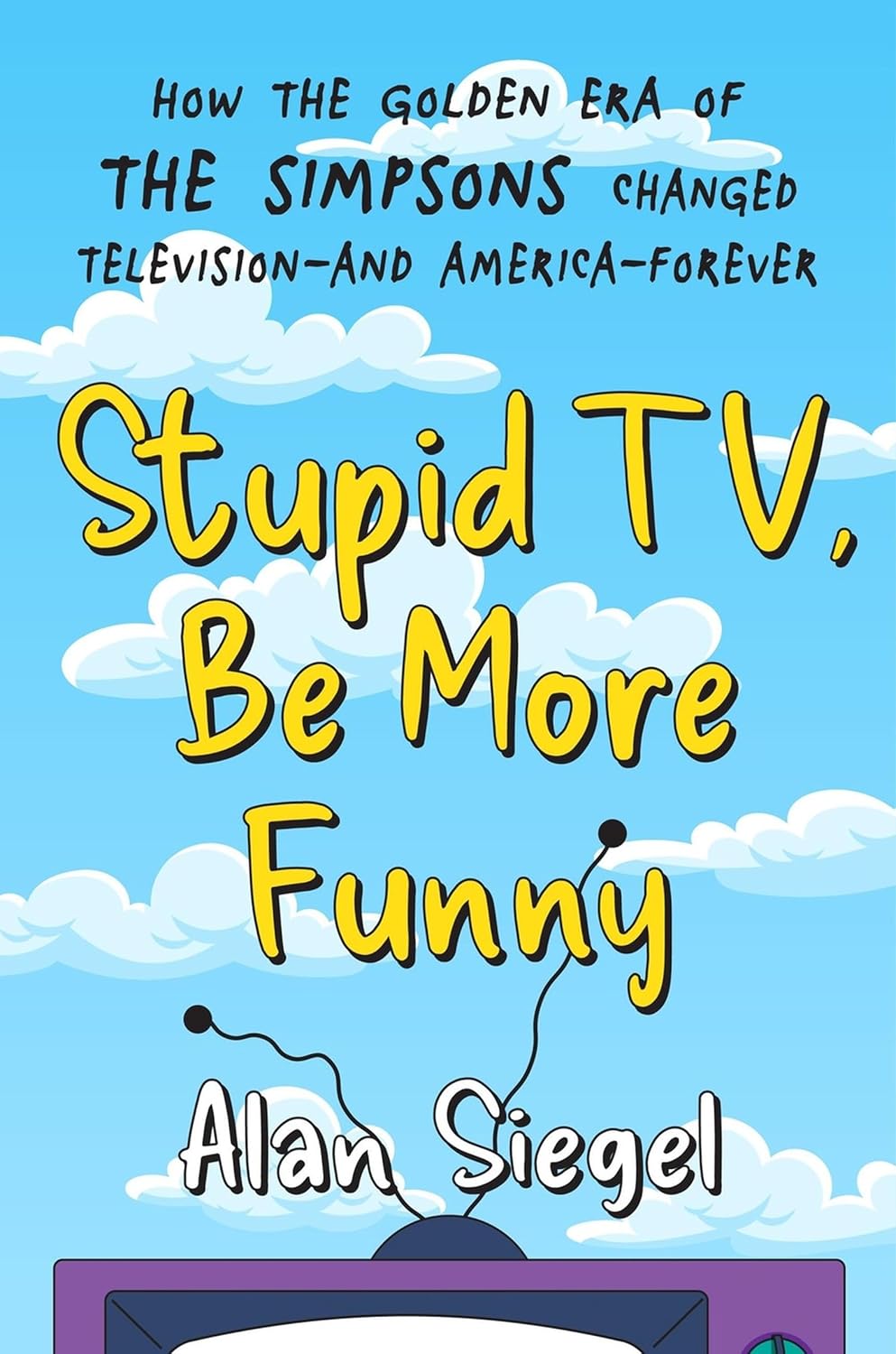
The Simpsons is one of my all-time favorite shows, and, along with Arrested Development and Parks and Recreation, one of my most rewatched shows. It’s amazing how much of my sense of humor and even general knowledge of random pop culture facts is directly due to seeing something in the Simpsons at the right formative age.
This book details the creation and rise of the show in popular culture. It was a very quick read. Actually, my only slight criticism is that it doesn’t go quite deep enough. It did a great job of talking about the early creators, writers, and some of the stories from that time. But it reads more like a long magazine article than a true in-depth book.
One thing I wasn’t aware of is just how popular the Simpsons were from the get go. There was no slow burn. Right from the first episode, the Simpsons were a huge sensation, and Simpsons t-shirts sold out almost instantly. I also didn’t know that there were some “feuds” that the Simpsons actively courted, first with the Cosby Show, then with President Bush.
The Anxious Generation by Jonathan Haidt
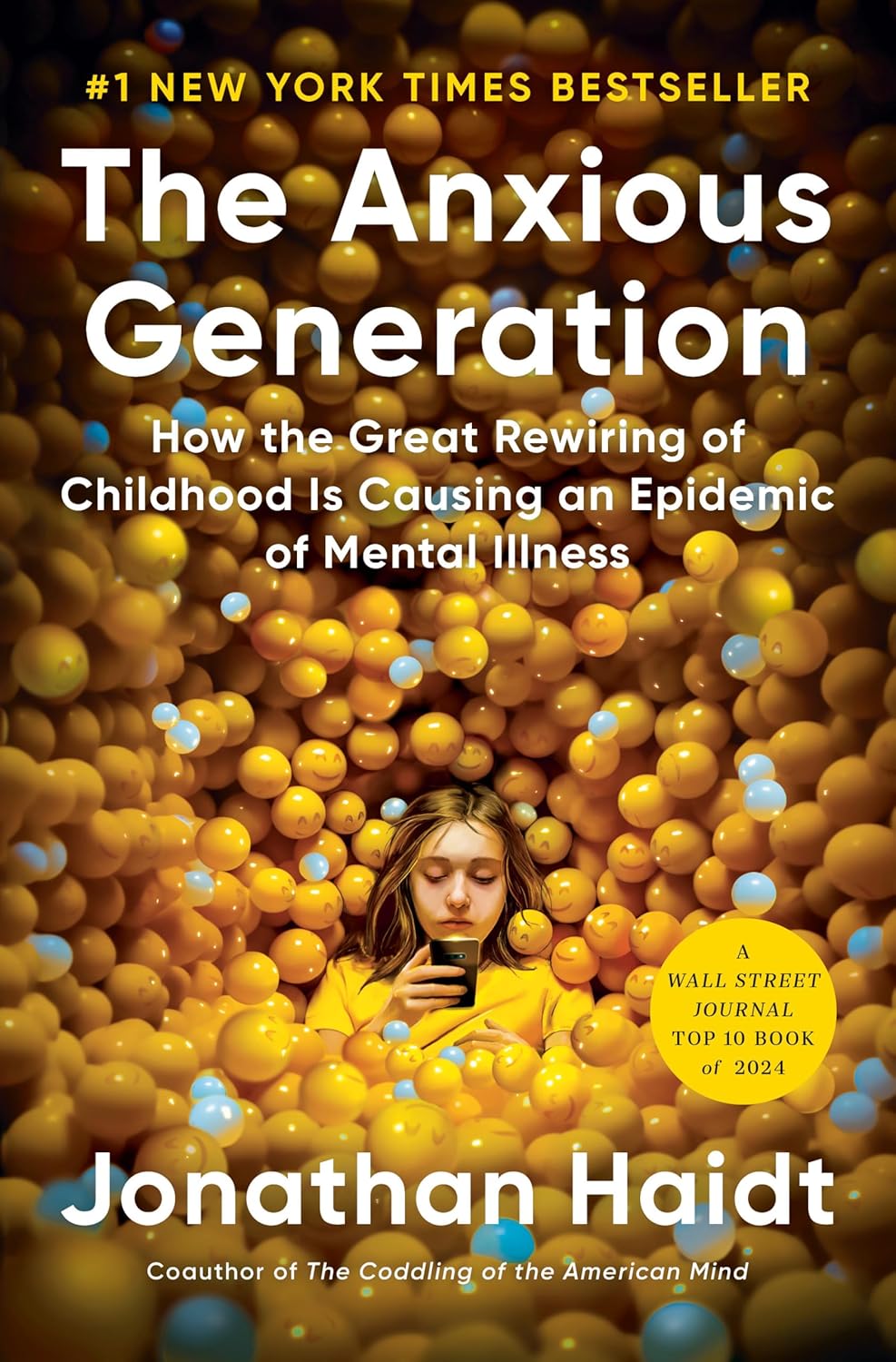
This was an eye-opening read. It’s a very well-researched, well-sourced, and data-rich look at how smartphones and social media apps have affected generation Z (those born between 1997-2012). It found all of these scary correlations on teenager moods, confidence levels, suicide rates, and pretty much everthing else, with smartphone usage.
I think gen Z probably had it the worse. They were the first generation to get phones in their hands by default as early teenagers, and there wasn’t as much awareness on the possible dangers of social media and peer pressure as there is now. I know this book has greatly influenced how I think about raising my two daughters, who are still too young for phones, but right at the age when some of their friends are starting to get them.
Another great and eye-opening point for me is the need for “unstructured play”. One of the trends in our culture is that parents feel the necessity to monitor and keep tabs on their children 24/7. This is actually unhealthy. We need to allow for more unstructured time, which allows kids to learn and especially to fail.
Apple in China by Patrick McGee
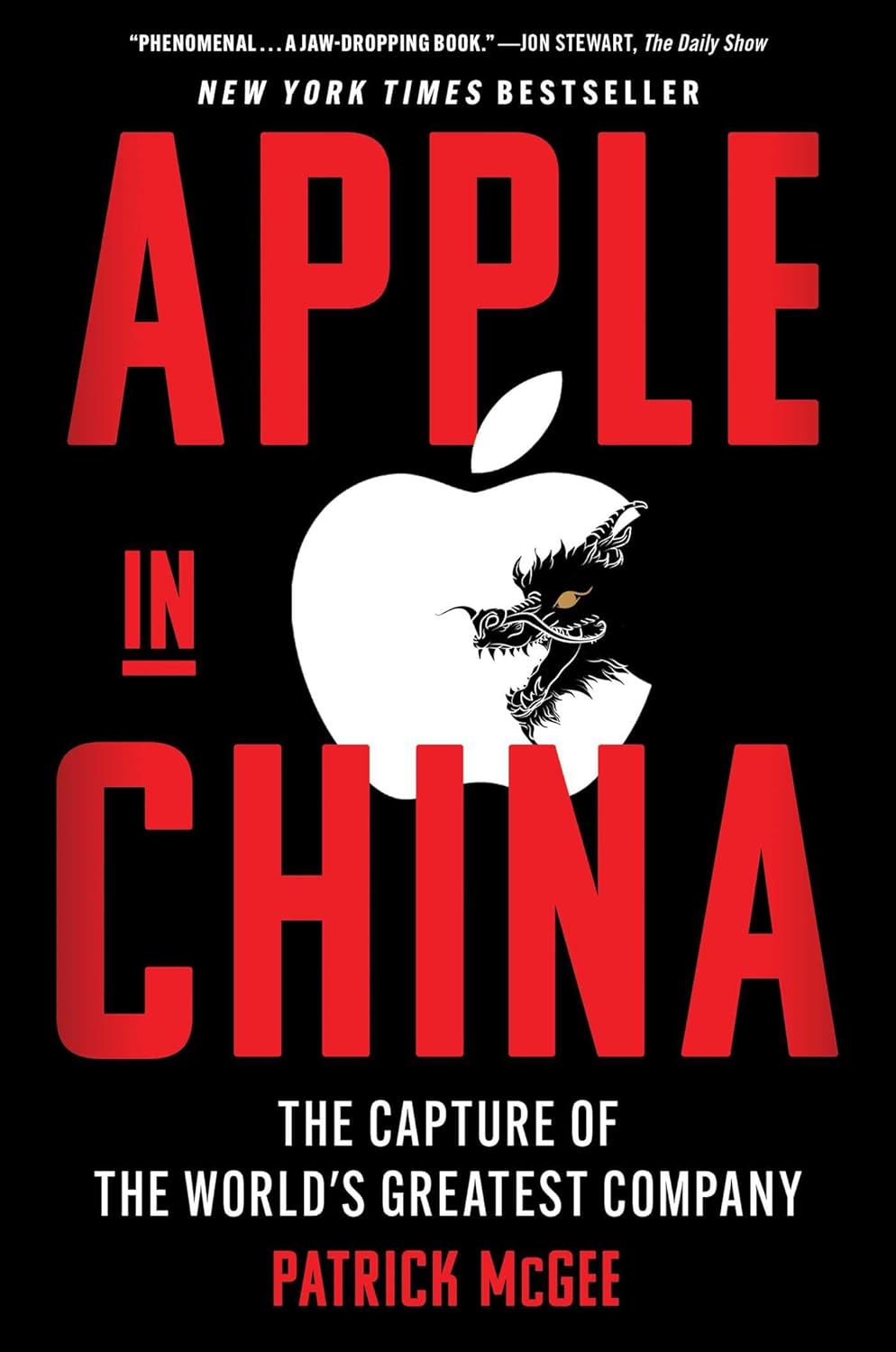
This is easily one of the best non-fiction business books that I’ve read. It’s well-written, with all sorts of interesting anecdotes, while maintaining a real narrative arc that suggests that Apple has essentially doomed themselves with an over-reliance on Chinese manufacturing. I finished almost the entire book during our vacation in Japan.
This book details just how organic the relationship between Apple and China was. The major start of it was with Taiwanese company Foxconn. Apple was ruthless in procurement - it paid out tiny margins and forced their suppliers to take defect risk. What Foxconn realized earlier than anyone else was that Apple was also the best at hardware design, and that they were always on the forefront. So what Foxconn got out of the relationship wasn’t traditional profits from margins, but rather the education that they got from having Apple engineers come in and train them on how to manufacture at scale. And Foxconn were very good at playing the political game in China, and securing both real-estate investment and labor.
Over time, Foxconn was able to leverage its knowledge to easily copy iPhone features for other China-based OEMs, such as Huawei and Xiaomi. And yet even more over time, Foxconn itself would get displaced by Chinese-native manufacturers, who were more favored by China’s political regime. The trouble now is that Apple cannot extricate itself from China. Only Chinese manufacturers are able to produce Apple products at the necessary scale, technical quality, and cost that Apple is used to. And Apple itself continues to be more and more interdependent on the Chinese government, which is a dangerous place for a company to be.
There’s a small personal angle here for me (other than the fact that we live in Cupertino, literally just miles away from Apple HQ). In 2011, I was recruiting for post-MBA jobs. Apple came to our school and did their presentation. I remember being really excited going in to the session. After all, who wouldn’t want to work for Apple, the single greatest device maker in history, and probably the absolute perfect representation of the close marriage between hardware and software? During the actual presentation, they sang a totally different tune. There were three teams that came: operations, procurement, and supply chain management. The Apple employees mostly talked about the importance of going to China. They stressed in this job recruiting session how much and how often we would be going to China (most likely Shenzhen) and working to optimize the manufacturing line.
Looking back, it totally makes sense. This was during the period when Apple was really ramping up its production. The iPad had just been announced. Airpods hadn’t even come yet. And the iPhone was popular in the US, but hadn’t yet become the default choice for the premium market worldwide. Apple didn’t need any help with product strategy. There were only a few products, and they were already selling like hotcakes. What they needed was to take this goldmine and make it scale as large as possible, and as efficiently as possible.
I came out of the recruiting session slightly confused, but I had much bigger fish to fry. Your time as a graduating MBA student looking for a job is extremely precious, and there is an opportunity to talk to dozens of potential employers in just a few short weeks. I decided to move on, and I didn’t even apply to any of the Apple openings. I ended up receiving a Product Manager job offer from AWS to work on Amazon S3, and I couldn’t be happier with the outcome (or luckier). If anything, this book hammered home just how often Apple’s smartest and brightest were flying to China.
comments powered by Disqus